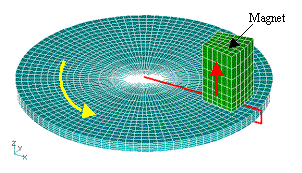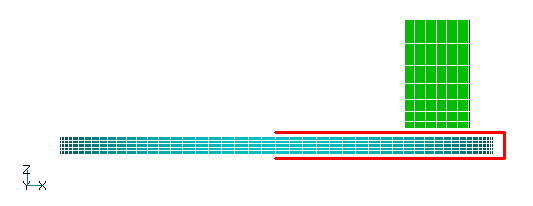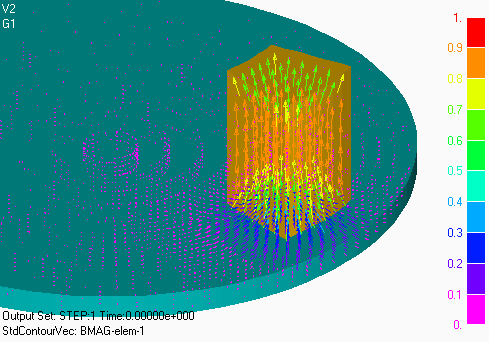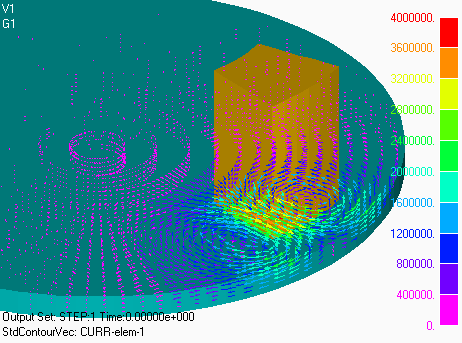Analysis when the sliding surface includes the central axis of rotation
- TOP >
- Analysis Examples by Functions (List) >
- Analysis when the sliding surface includes the central axis of rotation
Summary
If the rotor includes a central axis of rotation, the central axis must be included in the sliding surface. Here is an example.
Explanation
Consider the case where a conductor disk rotates under the magnetic field of a magnet as shown in Fig. 1. In this case, the sliding surface is defined by the sliding edge shown by the red line. Both ends of the sliding edge lie on the axis of rotation. In the sliding method, the sliding edge is rotated around a central axis to generate a regular mesh in that plane. In the direction of motion, it is divided into equally spaced divisions (Ndiv divisions). From the central axis, the mesh is generated radially. Therefore, the meshes on both sides of the sliding surfaces of the rotor and stator are radially divided from the central axis, and the number of divisions must be close to Ndiv. Although it does not necessarily have to be equally divided, it is desirable to be as close to Ndiv equal divisions as possible, which tends to give better calculation accuracy.Fig.1 shows the division of the rotor and stator as well as the sliding surface.
Fig. 2 shows the results of the DC field eddy current analysis when the disk is rotated at 10 rpm. Next, let us consider the case where the disk is rotated with no torque applied, using this state as the initial state. The disk continues to rotate due to inertia, but the rotation speed slows down due to eddy current loss. For this analysis, EMSolution’s Dynamic module is used.
Fig.2 Steady state obtained from DC field eddy current analysis
The results of the analysis are shown in Fig. 3. As the rotational speed decreases, the electromagnetic torque also decreases (almost proportional to the rotational speed), and the rate of change becomes smaller.
The rest of this page is for members only.
Analysis Examples by Functions
Sliding method
- Analysis with closed sliding surfaces
- Effect of Shape Data Accuracy on Sliding Method
- Use of external current magnetic field sources during slide motion analysis
- Analysis when the sliding surface includes the central axis of rotation
- Analysis using two sliding surfaces
- Rotating machine AC steady-state analysis in the presence of slippage
©2020 Science Solutions International Laboratory, Inc.
All Rights reserved.









